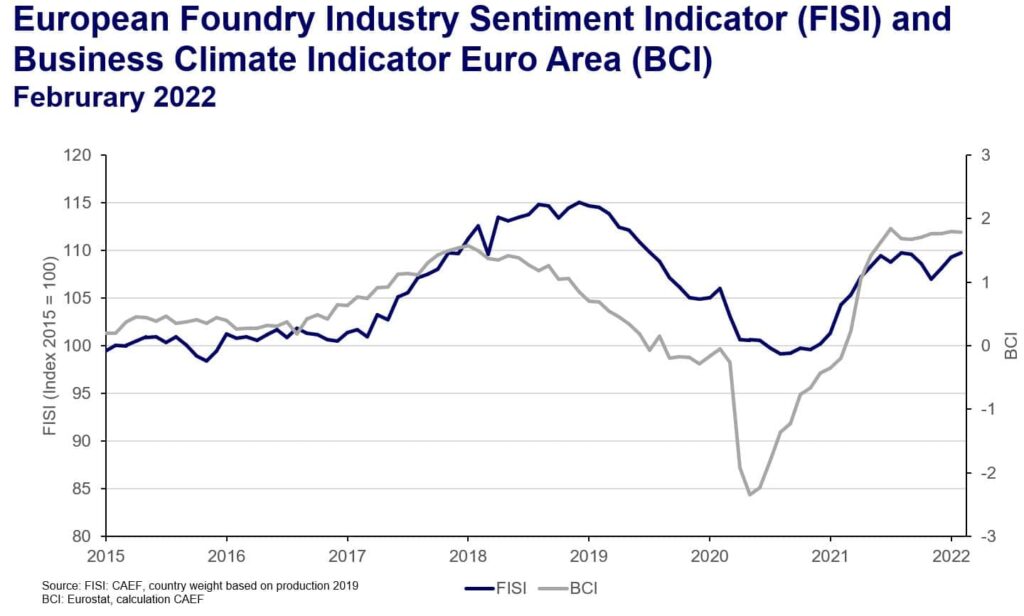The European Foundry Industry Sentiment Indicator (FISI) increases by a solid 0.4 points in February and reaches a value of 109.8 points. This marks the highest value since pre pandemic June 2019.
Consequences of war in Ukraine
Considering that the data were collected before the Russian invasion of Ukraine started, it must be said that the FISI of February 2022 is losing its significance and relevance.
Whether in raw materials, binders, transport or energy, European foundries are confronted with immense cost explosions in almost all areas. There are also acute shortages of input materials due to the disruption of international supply chains. At the same time, negative reports from customer industries bring further uncertainties.
It is not possible at this point to make serious statements about the effects of the war. The sanctions can be tightened at any time and lead to further spillover effects that influence European foundries.
That the business climate will suffer a considerable shock in the coming month can be considered as certain.
For the sake of completeness, take note that the Business Climate Indicator (BCI) remains on a high level in February. The minor decrease of 0.01 points brings the index to 1.79 points.
The FISI – European Foundry Industry Sentiment Indicator – is the earliest available composite indicator providing information on the European foundry industry performance. It is published by the European Foundry Association (CAEF) every month and is based on survey responses of the European foundry industry. The CAEF members are asked to give their assessment of the current business situation in the foundry sector and their expectations for the next six months.
The BCI – Business Climate Indicator
The BCI – Business Climate Indicator – is an indicator published by the European Commission. The BCI evaluates development conditions of the manufacturing sector in the euro area every month and uses five balances of opinion from industry survey: production trends, order books, export order books, stocks and production expectations.




